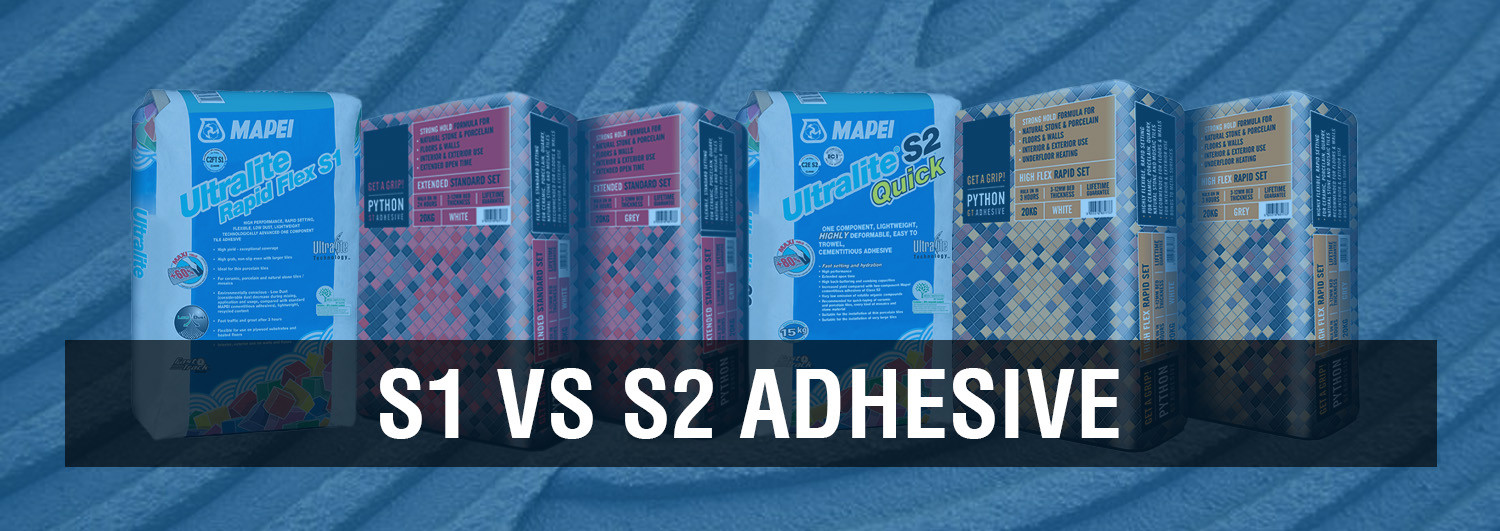We use cookies to make your experience better. To comply with the new e-Privacy directive, we need to ask for your consent to set the cookies. Learn more.

The Difference between S1 & S2 Tile Adhesive is:
S1 = Deformable (in conjunction with all the above features, this adhesive also has added flexibility, a deformability of between 2.5mm & 5mm)
S2 = Highly Deformable (this product has high flexibility, a deformability of above 5mm


Why Choose an S1 Adhesive?
The flexibility of S1 Adhesives makes them a great investment for tiling projects. They typically cost more than standard C2 adhesives, but in the long term, you'll find that they're worth every penny!
S1 and S2 adhesives are a great choice for use on the flooring because they're made to withstand movement within the substrate. If you use an adhesive without being flexible, then when your floors vibrate or move around due to vibration from traffic patterns in buildings core structural elements will crack eventually leading up lifting tiles off their feet! Movement is a common occurrence in all materials, but tile floors are particularly susceptible to temperature change. If you want your project to last for years instead of just months or seasons- invest wisely by securing it against failure caused by movement!
Substrates that you would never imagine to have movement such as concrete over time can continue to cure, and the slightest movement in your substrate can cause you severe issues. With the right adhesive, you can prevent tile cracks from appearing in concrete or other surfaces after installation. S1 Adhesives are specifically designed for this type of situation and will keep your floor safe no matter what happens during curing periods! Some of our S1 Adhesives are Python ST & Python RS


Why Choose an S2 Adhesive?
S2 products are also designed with flexibility in mind. The difference from an S1 product being the amount of deformability the adhesive allows. Typically, an S2 adhesive allows for 5mm or more, for example, the Python GT allows for movement of up to 10mm, one of our most popular S2 adhesives.”
If you're working on a project that has more movement and/or vibration, then use an S2 adhesive. These circumstances typically apply to, Tiling directly onto tongue-and-groove floorboards; or single-layer plywood with no isolation underneath it (e.g., floating floors). The Python GT S2 Adhesive is suitable with:
- Sand/Cement Screed
- Concrete
- Plywood Overlay (6mm min)
- Electric Underfloor Heating
- Water/Wet System Underfloor Heating
- Tile Backer Boards
- Existing Ceramic, Porcelain and Natural Stone Tiles*
- Flooring Grade Asphalt & Bitumen*
- Anhydrite Screeds
- Plaster
- Plasterboard
- Fibre Cement Sheet
As well as many more, see the full list here.

